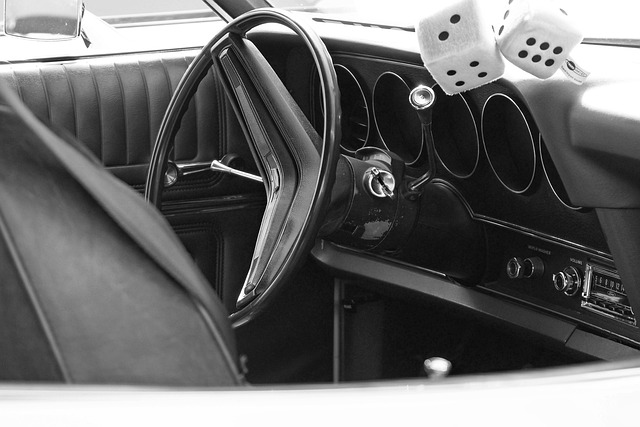Looking to register your car in California? It’s a straightforward process, but understanding the requirements is key. This guide walks you through every step, from gathering essential documents for a successful DMV VIN verification to submitting your application and receiving your vehicle registration and license plate. By following these clear instructions, you’ll be cruising down the open road in no time.
- Understand the Requirements for Car Registration in California
- Gather Necessary Documents for DMV VIN Verification
- Perform DMV VIN Verification Step-by-Step
- Submit Your Application and Pay Fees at the DMV
- Receive Your Vehicle Registration and License Plate
Understand the Requirements for Car Registration in California

Before registering your car in California, it’s crucial to understand the requirements and processes involved. The first step is to ensure your vehicle meets all safety and emission standards set by the state. This includes a comprehensive DMV VIN verification process, where the unique Vehicle Identification Number (VIN) of your car is cross-checked against official records to confirm its authenticity and history.
Additionally, you’ll need to undergo a vin inspection to verify that all components of your vehicle are in working order. This can be done at designated service centers or through a mobile vin verifier, offering convenience for those who prefer not to visit a physical location. Remember, these steps are essential to ensure a smooth registration process and to comply with California’s regulations.
Gather Necessary Documents for DMV VIN Verification

Before heading to the DMV for your car registration, make sure you have all the required documents ready. This process is known as dmv vin verification and is a crucial step in the registration procedure. Gather the vehicle’s registration certificate from its previous owner, along with the title (if applicable), proof of insurance, and a valid driver’s license or state-issued ID card.
For added convenience, many individuals opt for mobile vin inspection services using a mobile vin verifier. This alternative approach allows you to get your car’s VIN verified remotely, saving time and potential trips to the DMV. Ensure that whatever method you choose, all documents are up-to-date and accurate to facilitate a smooth dmv vin verification process.
Perform DMV VIN Verification Step-by-Step

To begin the DMV VIN verification process, gather all necessary documents before heading to your local California Department of Motor Vehicles (DMV) office. This includes proof of identity and residency, as well as the vehicle’s registration paperwork and title. It’s crucial to ensure your vehicle meets all safety and emissions standards set by the state.
Once at the DMV, locate the designated area for VIN inspections. A staff member will guide you through the process. They’ll verify the information on your documents against the vehicle’s unique Vehicle Identification Number (VIN). This involves a thorough inspection, including checking the vehicle’s mileage, condition, and any modification from its original state. For added convenience, many DMV locations now offer mobile VIN verification services, allowing you to complete this step without the need for an in-person visit.
Submit Your Application and Pay Fees at the DMV

Once you’ve completed your vehicle’s registration preparation, it’s time to submit your application and fees at the DMV. This step is crucial for officially registering your car in California. You’ll need to visit a local Department of Motor Vehicles (DMV) office with your completed forms, valid identification, and payment for the registration fees. The staff will verify your vehicle’s information, including performing a DVL (Vehicle Identification Number or VIN) verification to ensure the data matches their records. This process is streamlined by many mobile vin inspection services that offer convenient and accurate on-site or remote verifications, saving you time and effort.
During this visit, you’ll also pay the required fees for vehicle registration, which can vary based on your car’s make, model, age, and other factors. After processing your application, the DMV will issue a registration certificate and license plates for your vehicle. Ensure all information is accurate to avoid future issues during subsequent VIN verifications or renewals.
Receive Your Vehicle Registration and License Plate

After completing your vehicle’s registration application at the California DMV, it’s time to receive your official documents. The process typically involves receiving a Vehicle Registration Certificate and a set of license plates for your car. This crucial step is an essential part of legalizing your vehicle on California roads.
To streamline this process, many individuals opt for a mobile vin inspection or mobile vin verification service. These services utilize specialized equipment to perform a vin verification directly at your location, ensuring that the registration and plate issuance are efficient and convenient. By leveraging technology, such as a mobile vin verifier, you can save time and avoid unnecessary visits to the DMV, making vehicle registration a breeze.
Registering a car in California involves understanding specific requirements, gathering essential documents, and successfully completing the DMV VIN verification process. By following these steps outlined in the article, you’ll be well on your way to securing your vehicle’s registration and license plate. Remember, accurate information and preparation are key to ensuring a smooth registration experience at the DMV.
